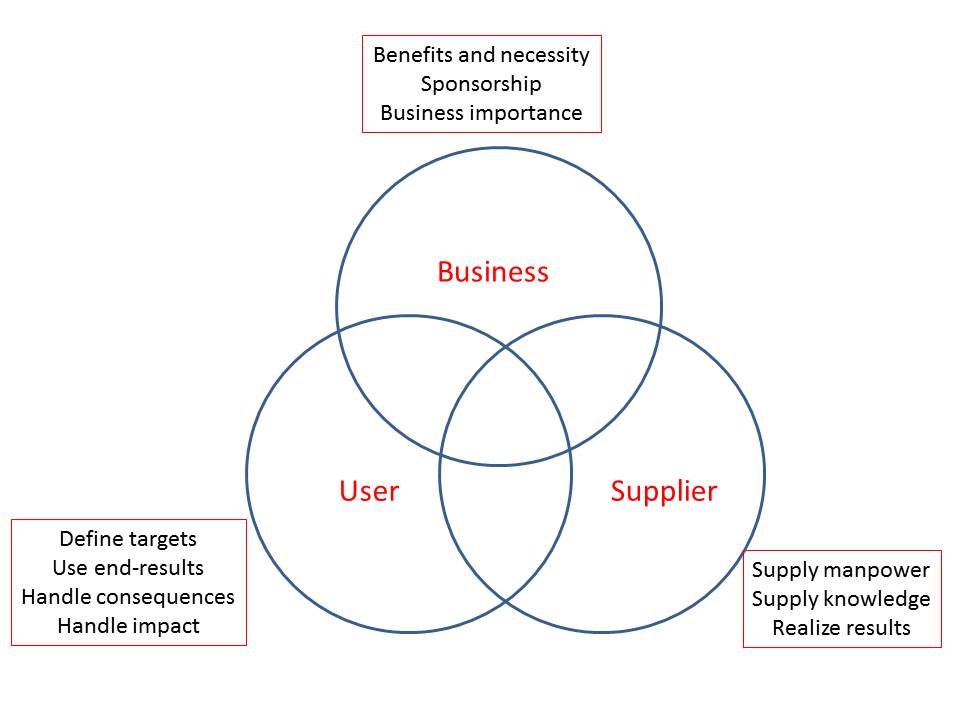Fairly often I’m consulted to help organizations improve the transfer of project results to the service and maintenance teams. These requests always come from the service and maintenance teams and mostly from business information management / information management, because they experience time and time again that projects perform very poorly at this point. But also for many project managers the transfer to and acceptance by IT service management is a troublesome issue. Project managers don’t know what they should deliver, and it is hard to find someone that can formally accept the project results. Therefore, for a project manager it is tempting to say: I involve an operational service manager in the project, in order to produce the necessary IT service management products and thus the acceptance is managed. But this would be a huge misconception. As soon as an IT service manager is a project member, he or she is part of the supply organization and no longer of the accepting organization. The products he or she produces will still have to be accepted by the receiving IT service management teams.
But what about Prince2? Shouldn’t give Prince2 give a simple answer to this problem? Or is it, again a matter of good old Pino: Prince2-in-name-only?
At first glance one would say: this has to be managed in the Business Case and in the PID. After all: failing projects always fail on day one (there has been no good preparation and/or the deliverables and scope have not been defined well enough). Prince2 addresses this issue, but very high level. Not strange, as requirements will vary, depending on the situation: the subject, the matter, the organization etc.
And after the kick-off one would expect that everything is organized and regulated. Surely there is a project board in which all parties are represented? Yes, Prince2 tells us about the BUS:
- The Business, the Executive: the representative of the organization to which the value of the project is delivered. This is the sponsor, the client.
- The Users or Senior User: the person who represents the users.
- The Supplier: the supplier carries out the project and realizes the product or results.
But where are the representatives of the IT service management organizations: IT infrastructure management, application management and business information management? Is this a flaw in Prince2? Yes and no. Prince2 says: the users are the people who are going to use the result of the project, operate, maintain or facilitate or have to do with the results. Thus the Senior User represents the IT service management parties. And the Senior User must therefore ensure that the IT service management parties indicate which products they expect, what the requirements are to those products and that review and acceptance take place.
From this I can conclude that Prince2 recognizes this interest, but that the relevant projects where this goes wrong suffer from Pino. But most important: I conclude that the Senior User should be a business information manager. Somebody that represents both the user organization and the IT service management parties! Too bad this role isn’t mentioned in Prince2. The BUS should be a BBS. With the B of Business information manager. So: a flaw!
Obviously The Lifecycle Company, as a specialist in the field of ASL and BiSL, has helped many IT service managers with the definition of acceptance criteria and implementation of acceptance activities, because most IT service managers can use some help with this. But it’s not just that: it is also in the organization of the project: a ride in the BUS isn’t automatically a joyride.


